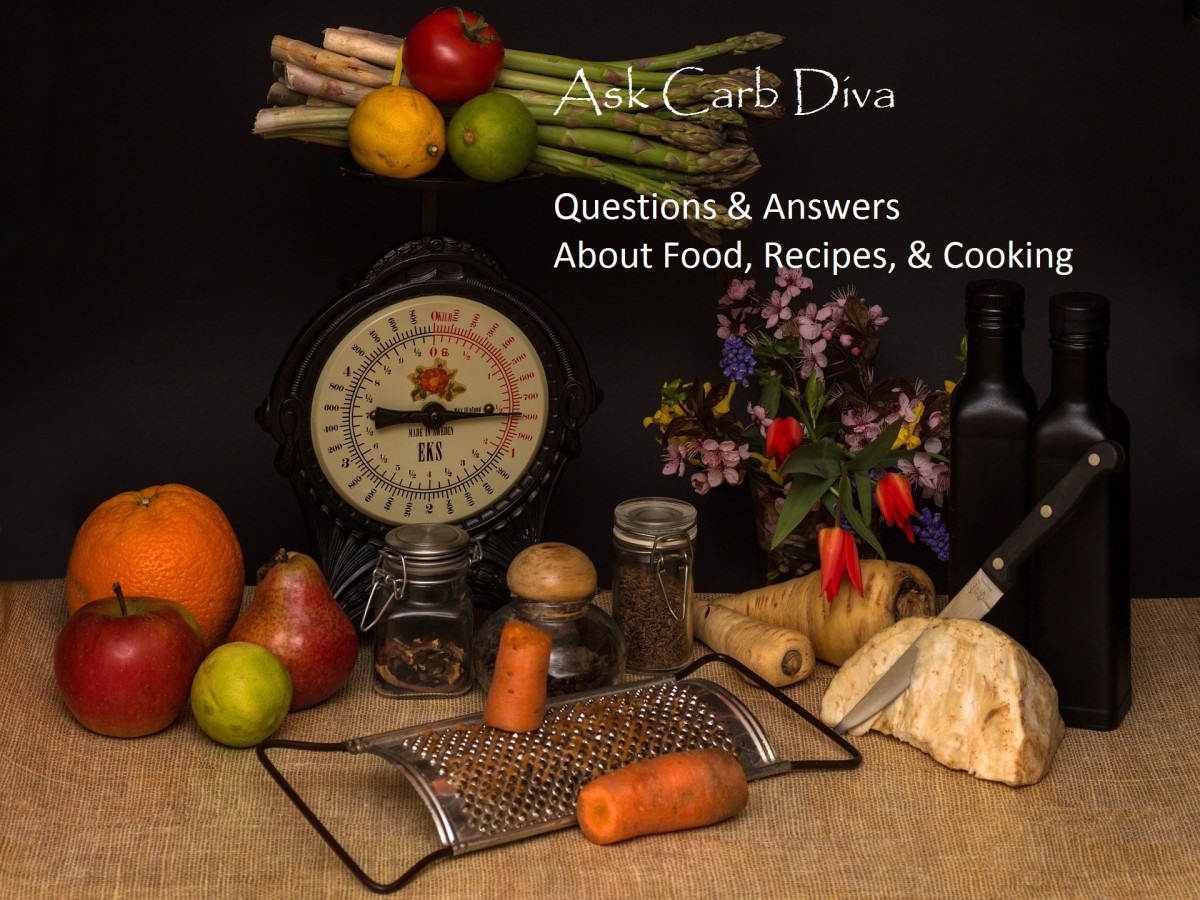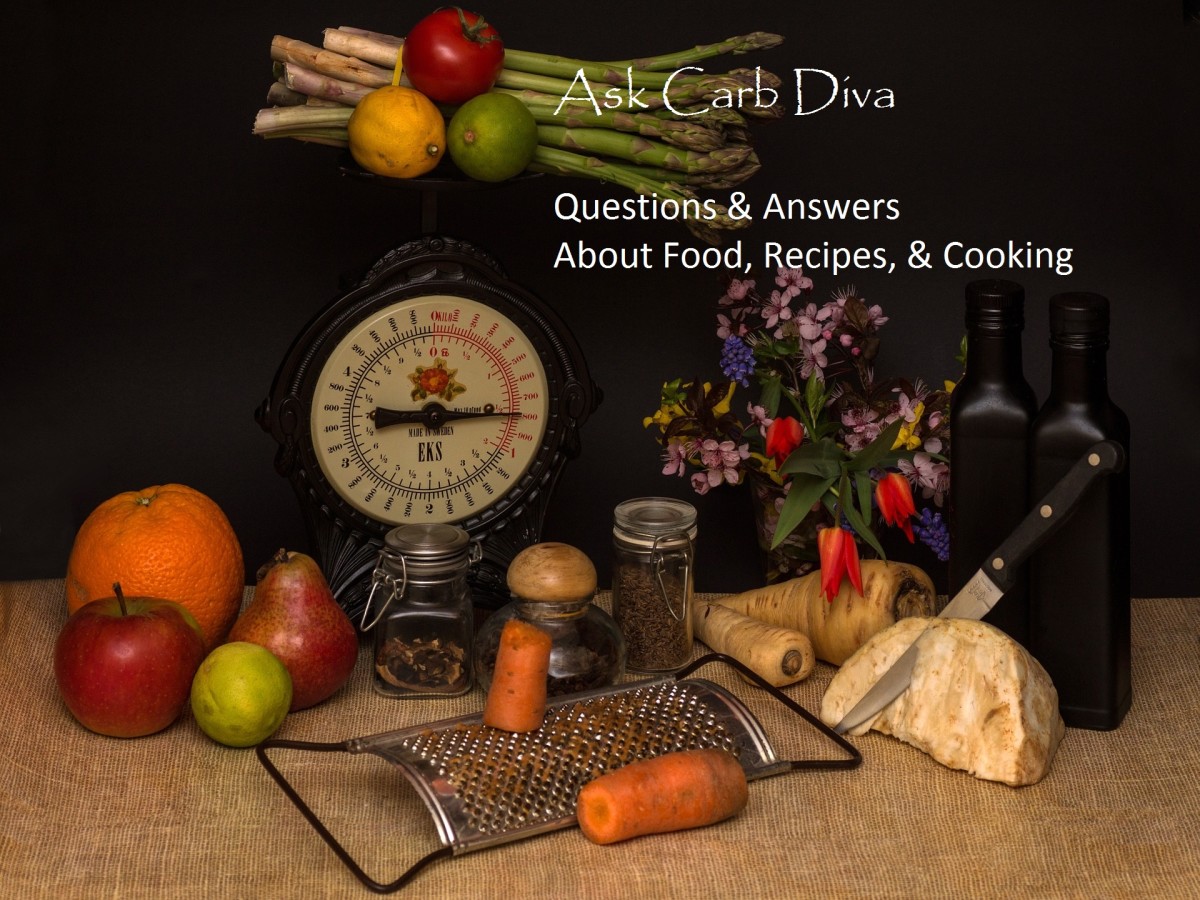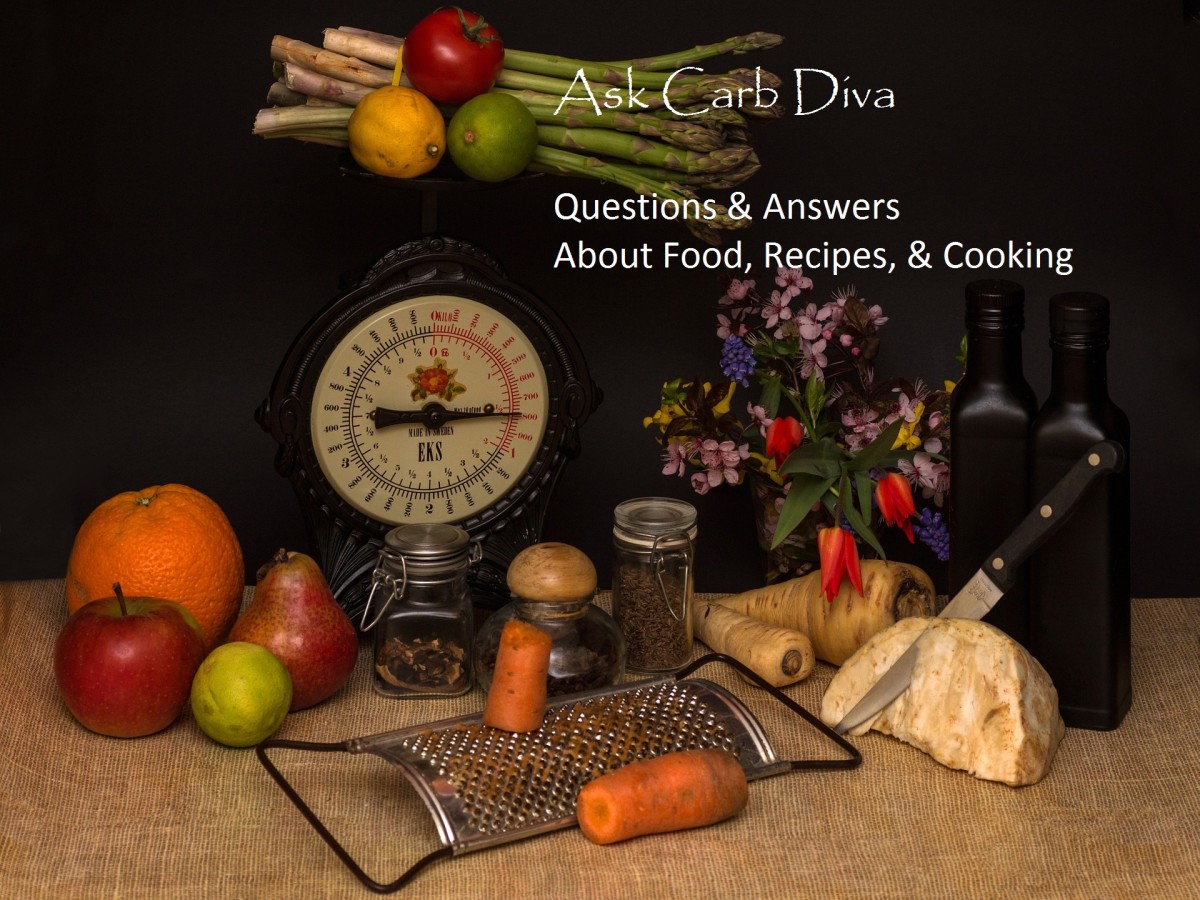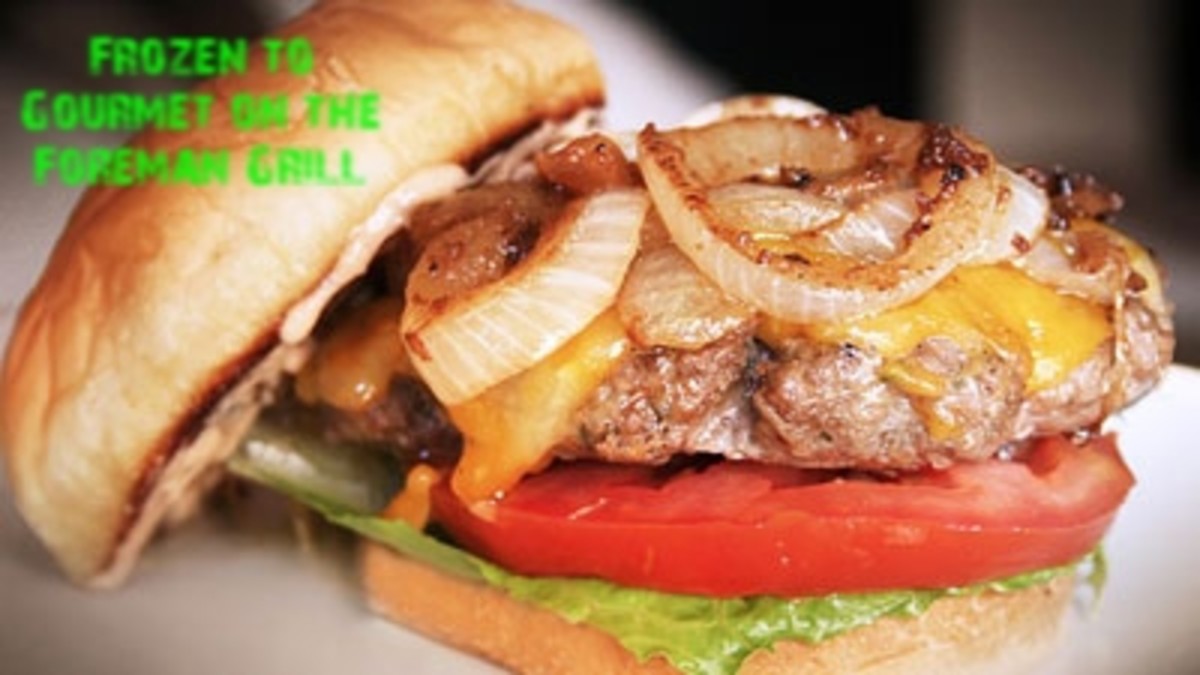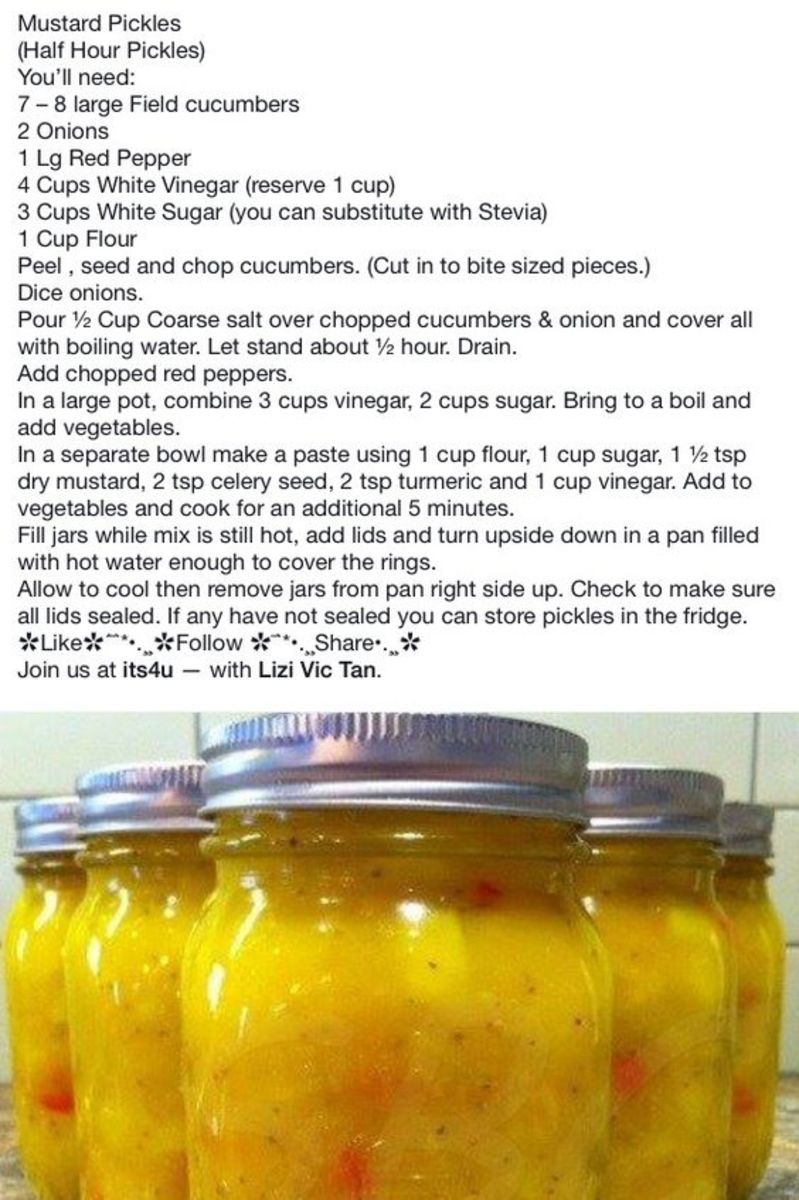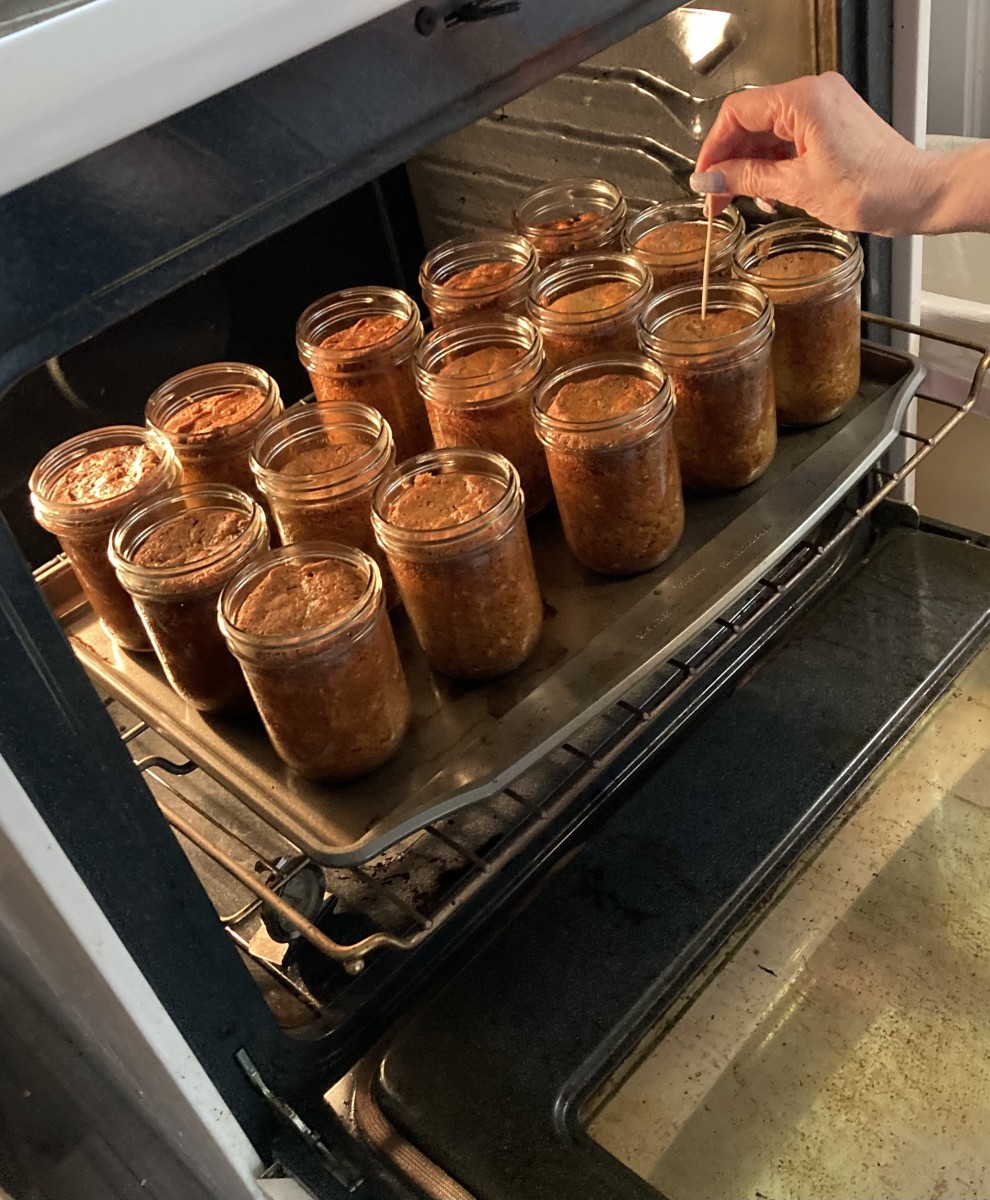Ask Carb Diva: Questions & Answers About Food, Recipes, and Cooking, #83
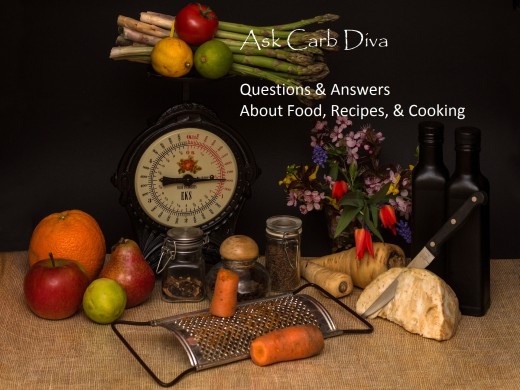
Hurry Up and Slow Down
Well, how's that for an oxymoron? (Or, at the very least, a whiplash of activities?) Allow me to explain.
Last week I invited a dear friend over for lunch. The journey from her house to mine (and vice versa) is about an hour, so when we visit each other it is indeed a commitment of time and a testament of devotion.
The weather on that day was perfect—warm and sunny with just barely a hint of a breeze. As we usually do, we strolled around the garden which is, at this moment, bursting forth with blooms and blossoms. Donna paused often, admiring the fragrances and the array of colors. Meanwhile, I was fretting about the weeds popping up here and there (when you have 1 1/2 acres the task is never done).
And then it hit me—why do I work so hard in my garden? If all I do is toil and never stop to "smell the (figurative) roses" what is the point? And so I recognized that I need to hurry up to the task of slowing down. I need to allow myself to "enjoy the joy."
Enjoy the Joy
Click thumbnail to view full-size


OK, I feel better now. Let's get started on why you are really here.
If you're an old friend, you already know how this column works. But, if this is your first visit, let me introduce you to the rest of the group. Each week I receive questions about food ingredients, cooking or baking terms or methods, requests for recipes, and queries about nutrition. Just about anything goes.
Want to join in the fun? You can leave your question in the comments below, and next week the answer will be right here. It's that easy. Let's get started with a question from our dear friend Manatita.
Foods for Eye Health
I have just had eye surgery for my glaucoma. (Six weeks post-op) They call it a Right Trabeculectomy. Can you do some research on foods that aid or assist eye health? Gratitude.

Manatita, I am sure that everyone who reads this will be overjoyed to hear from you once again. You have asked a supremely important question—we are granted only two eyes, and there is no replacement. At your request, I did some research on which foods support and promote eye health. Luckily, since you are a vegetarian, you probably already have many of these nutrient-rich foods in your diet. Here is what the Glaucoma Research Foundation says:
- Strive to eat fruits and vegetables that contain carotenoids (good for overall vision health).
- Produce high in Vitamins A and C has been shown to reduce the risk of glaucoma.
- “Oxidative stress” is an imbalance of free radicals vs. antioxidants in the body; this can lead to damage to the optic nerve. Foods rich in antioxidants may help prevent further injury.
So, what does this mean? I’ll explain each of these three categories and provide a list of foods:
Carotenoid – As the first two syllables of the word might suggest, carotenoids were first identified in the carrot family. Their main role in the plant world is to absorb harmful wavelengths in the light spectrum, protecting the chlorophyll of the plant body. According to Harold McGee (“On Food and Cooking: The Science of and Lore of the Kitchen,” Scribner Publishers 1984) “they can do the same in the human body, particularly in the eye.” They protect. You will find carotenoids in most of the red/orange/yellow fruits and vegetables.
- Cantaloupe
- Carrots
- Oranges
- Plantains
- Pumpkin, canned
- Sweet potato
- Winter squash
Vitamin A – Vitamin A is the MacGyver of the nutrient world—it seems that it can protect, repair, or restore just about every part of the human body—vision, skin, bones, heart, lungs, and kidneys all benefit from a diet rich in this fat-soluble nutrient. According to the U.S. National Library of Medicine, there are two types of Vitamin A—preformed vitamin A also called retinol, is found in animal products. Pro-vitamin A is found in plant-based foods such as fruits and vegetables.
Sources of retinol (animal-based preformed Vitamin A)
- Beef liver
- Butter
- Cheddar cheese
- Goat cheese
- Hard-boiled eggs
- salmon
Sources of pro-vitamin A
- apricots
- cantaloupe
- carrots
- collard greens
- kale
- mango
- papaya
- pink grapefruit
- red bell pepper
- spinach
- Sweet potato
- Swiss chard
- Turnip greens
- watermelon
- Winter squash
Vitamin C - The body uses Vitamin C to form collagen. According to the National Institute of Health, the body uses vitamin C to make skin, tendons, ligaments and blood vessels. It also uses this vitamin to repair and maintain cartilage, bones, and teeth, to heal wounds and to form scar tissue.
- Broccoli
- Brussels sprouts
- Cantaloupe
- Cauliflower
- Cooked cabbage
- Grapefruit
- Green peppers
- Kiwi
- Oranges
- Red sweet peppers
- Strawberries
- Tomato juice
Antioxidants – We hear that word a lot, but what is an oxidant, and why are we opposed to it? Isn’t “oxygen” a good thing? Here’s the layman explanation; oxidation is the process that happens when iron rusts or aluminum becomes dull and pitted. The same type of damage can happen to our tissues and internal organs. Antioxidants help our bodies cope with the wear and tear of life. Again I refer to Mr. Harold McGee who states “Oxygen…keeps our cellular machinery functioning. Unfortunately, it turns out that energy generation generates chemical by-products called “free radicals,” very unstable chemicals that react with and damage our own complex and delicate chemical machinery.”
- Artichokes
- Beans
- Beets
- Blueberries
- Dark chocolate
- Goji berries
- Grapes (red, blue, or purple)
- Kale
- Pecans
- Raspberries
- Red cabbage
- Spinach
- Strawberries
- Tea
Sources:
- Glaucoma.org
- Medical News Today
- Medicine Plus
- “On Food and Cooking: The Science of and Lore of the Kitchen,” by Harold McGee: Scribner Publishers (1984)(ISBN 978-0-684-80001-1)

Each week we learn about a food item that you probably toss into the trash bin without a thought or a care—until today that is. Let's find out which discards can be re-used and re-purposed.
Pickle Juice
You are probably thinking that I have totally lost my mind. Reuse pickle juice? Well, let’s consider what it really is and if it has any nutritional value. Pickle juice is a brine made of water, vinegar, salt, and spices (typically dill, mustard seed, and sometimes garlic.)
Nutrient
| Amount
| Percentage of RDA
|
|---|---|---|
Total fat
| 0 g
| |
Cholesterol
| 0 mg
| |
Sodium
| 470 mg
| 20%
|
Total carbohydrates
| 0 g
| |
Protein
| 0 g
| |
Potassium
| 47 mg
| 1%
|
Vitamin C
| 7 mg
| 8%
|
Vitamin E
| 1 mg
| 8%
|
Zinc
| 2 mg
| 15%
|
Nutritional value of pickle brine, based on a serving of 2.5 fluid ounces (75 ml)
If you like pickles, the most obvious use of the leftover brine is more pickled vegetables. Onions, garlic, canned artichokes, partially cooked (crisp-tender) carrot sticks or asparagus are a few examples. Here are a few more ideas:
- It’s basically vinegar, so you can use it as a substitute for vinegar in salad dressings, coleslaw, and potato salad.
- Pickle brine can be an instant meat tenderizer. (There is a rumor floating about that Chik-fil-A flavors and tenderizes their chicken in pickle juice).
- Perk up your Bloody Mary.
- Add to your homemade tartar sauce
If you live in the United States and occasionally watch the Food Network, you might have heard of celebrity chef Guy Fieri and his show “Diners, Drive-Ins, and Dives.” In each episode, he visits an area of the country searching out little known, hole-in-the-wall eateries which serve amazing foods.
Several years ago he visited Lakewood, Washington (just a hop and a skip from my town) and found Bruno’s European Restaurant. Bruno’s is owned and operated by Bruno and Krystyna Tomaszewska and is my favorite place (other than my own kitchen) for authentic German-Polish food. Almost everything in their restaurant is homemade, from the hand-stuffed pierogi to the hand-pounded and breaded schnitzel, to the homemade pickles for beef rouladen and pickle soup. Yes, pickle soup. It’s a thing, and it really tastes pretty good. I don’t have Bruno’s recipe, but I think this comes pretty darned close.

Ingredients
- 5 cups low-sodium chicken broth
- 6 cups (about 1 ½ pounds) russet potatoes, peeled and diced
- 2 cups diced carrots
- 1 cup diced dill pickle
- ½ cup all-purpose flour
- ¼ cup water
- 2 cups dill pickle juice
- 1 cup sour cream (not non-fat)
- 1 teaspoon Old Bay Seasoning*
- ¾ teaspoon black pepper
Instructions
- Combine the broth, potatoes, and carrots in a large stockpot. Bring to a boil and then cover and reduce to a simmer. Cook until the potatoes and carrots are tender, 5-10 minutes.
- Stir in the diced pickle.
- In a small bowl combine the flour, water, and pickle juice. Using a wire whisk and stirring constantly, slowly drizzle the mixture into the potato/carrot soup. Don’t stop stirring because (trust me) the flour mixture wants to turn into dumplings. This slurry will thicken the soup. Remove from the heat and stir in the sour cream, Old Bay, and black pepper. Taste for seasoning and serve.
(Adapted from a recipe by Noble Pig).
We're Organized
Did you know that there is a Table of Contents for this series? I have created an article that provides a detailed listing of each question I've received. It's broken down by category, and within each category, the questions are listed alphabetically. Each question is actually a hotlink back to the original post.
Here's a link to that Table of Contents.
If you like this series, you'll love this! Consider it my gift to you.
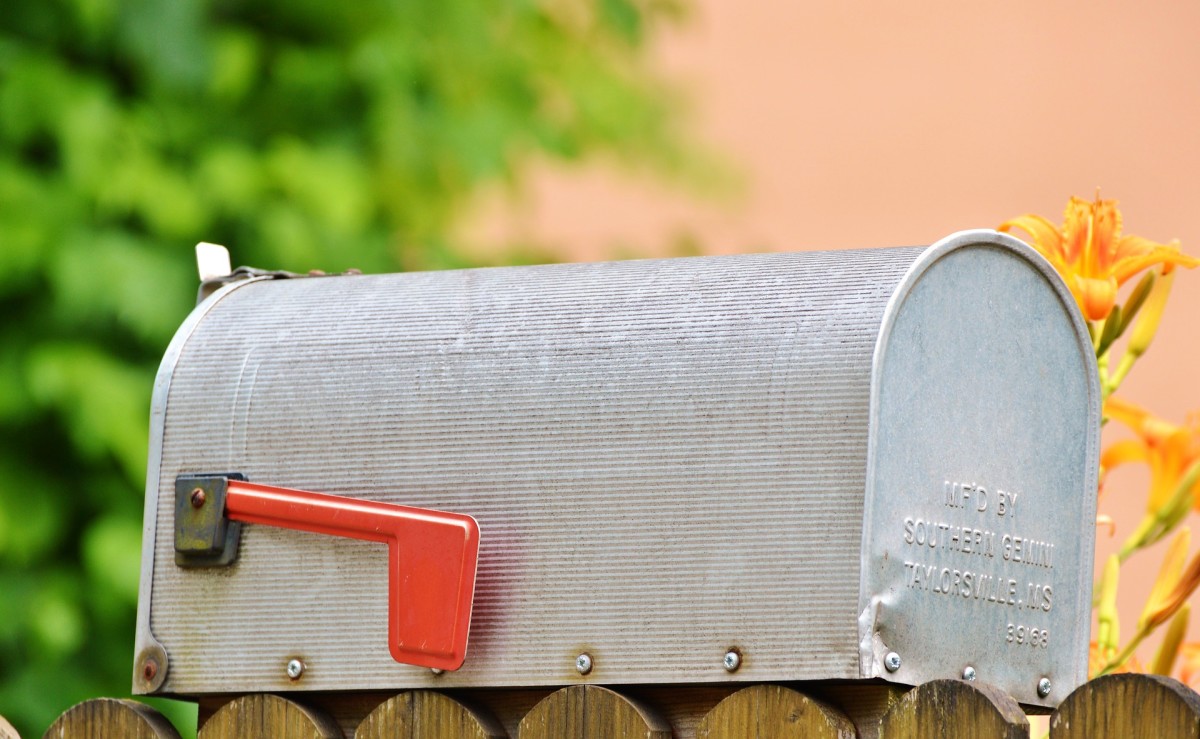
That was fun. If you have questions about foods, cooking techniques, or nutrition you can ask them here. If you are in search of an old recipe or need ideas on how to improve an existing one I can help you. If you want to learn more, let's do it together. Present your questions, your ideas, your comments below. Or, you can write to me personally at this email address: lindalum52@gmail.com.
And, I promise that there will always be at least one photo of a kitty in every Monday post.
© 2019 Linda Lum




